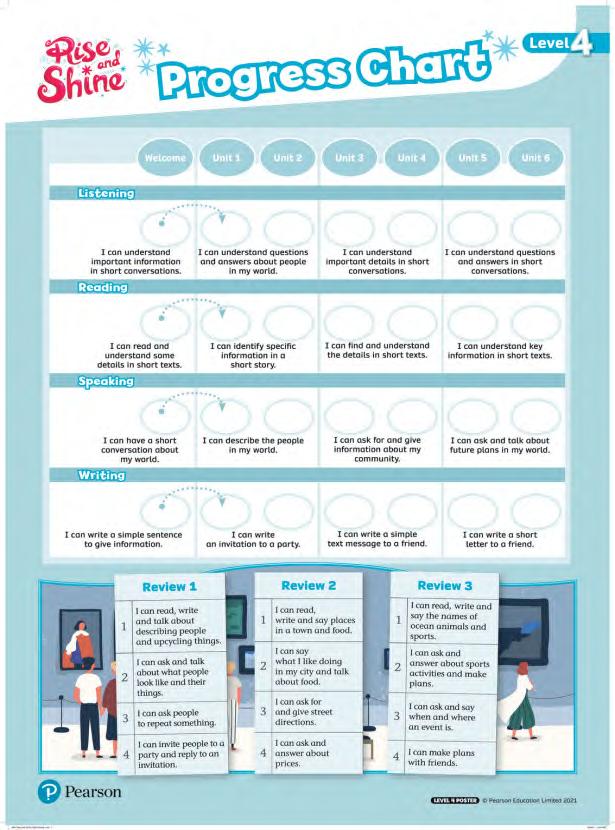
3 minute read
Teaching with posters
Posters can play a key role in English-language lessons because they are such a powerful visual tool. They can be a valuable way to focus students’ attention, allowing students to really engage with the topic, and also to consolidate and extend the language already learned. Tips for working with posters
Stick the poster to the wall in a visible place. In this way, it will remind students of the material they have covered. Predicting In order to create an atmosphere of anticipation and to invoke curiosity in children, give students the title of the poster before you show it to them. Tell students that in a moment they will see a poster with, e.g., ocean animals. Ask students to think about the vocabulary that may be presented on the poster. Encourage them to provide examples of particular words related to this thematic group. In the case of ocean animals, it will be a shark, an octpus, a seal, a seahorse, etc. Then stick the poster to the wall and check together how many words the students predicted correctly. Asking questions Point to the objects, people, colors, etc. presented in the poster and ask questions: What’s this? What color is it? How many (seahorses) can you see? Is it (an octopus)?, etc. Finding and pointing Ask individual students to come to the poster and fi nd and point to specifi c objects, e.g., Point to the seahorse, etc. You can also divide students into two teams and change the activity into an exciting competition. Ask one person from a team to come to the poster and fi nd a particular object. If he/she does it correctly, the team scores a point. If he/she makes a mistake, the other team takes a turn. Students can replace the teacher and give the commands. Quiz Tell students that you are thinking about a certain picture from the poster. The students’ task is to guess which picture you mean. You can describe the object you have in mind for more advanced students, e.g., It’s gray. It’s big. It has a tail. What is it? Students answer It’s a shark! Peeping through a keyhole Cut out a hole (5–7 cm wide) resembling a keyhole in the middle of a large sheet of paper. Place the sheet on the poster and ask students what they can see. Move the sheet on the poster, so that each time students guess the name of a diff erent object. Placing words on the poster If students can recognize written words, you can ask them to place appropriate fl ashcards, showing the word side, below the pictures in the poster. One by one, students come to the poster and place a card with the corresponding word in the appropriate place. Then you can ask all students to read the words aloud together. Memory game Set a specifi c time limit, e.g., 30 seconds. Tell students to look at the poster carefully and remember as much as they can. Then cover the poster or take it off the wall and ask students one by one about the objects presented in the poster. You can also ask about the features of these objects, e.g., Is the (octopus) (sleeping)? What color is the (seahorse)? The students’ task is to answer from memory. You can also conduct this exercise as a team competition, observing the time limit. The team who can name the highest number of items from the poster wins. True or false? Point to various objects on the poster and make true or false sentences related to them. For example, point to an octopus and say It’s a seahorse. Students answer No. It’s a jellyfi sh!
Advertisement









